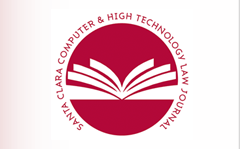Abstract
From the immune system of bacteria comes a promising new gene-editing technology, CRISPR-Cas9. Discovered in 2012, CRISPR-Cas9 has already been named one of the fastest, easiest, and cheapest gene-editing technologies. With this reputation, CRISPR-Cas9 shows promise in the research and treatments of a wide array of diseases: cancer, blood disorders, blindness, AIDS, Cystic Fibrosis, Muscular Dystrophy, Huntington’s disease, and even COVID-19 to name a few. This relatively new technology has brought hope to researchers, doctors, and patients alike; however, current biotechnology licensing practices could hinder CRISPR-Cas9’s groundbreaking potential. This article examines common biotechnology licensing practices, specifically the practices of two of the largest CRISPR-Cas9 patent holders, The University of California, Berkeley and The Broad Institute of MIT and Harvard. After each institution’s respective CRISPRCas9 discovery, a lengthy court battled ensued to determine which institution discovered CRIPR-Cas9 first, and whether patent infringement existed. Eventually, both institutions were granted their desired patents and quickly ensured the future of their technologies by creating independent companies to control the licensing of CRISPR-Cas9 patents. This article refers to such companies as “surrogate companies” and explains the function of these entities as the gatekeeper of valuable patent rights through exclusive licenses. This article offers solutions to existing exclusive licenses without losing sight of the important relationship between research institutions and surrogate companies. Providing limited field-of-use licenses, rather than over-inclusive exclusive licenses of CRISPR-Cas9 patented technology, will ensure that a wider range of the human genome can be treated. Rather than merely scratching the surface of multiple therapies, limited licenses allow companies to focus on and thoroughly develop specific gene therapies. This reduces the risk of overlooking or under developing potentially life-changing gene therapies. This article goes further, suggesting that the biotechnology industry adopt an open-source access model like the one used in the software industry. Such a model could prove beneficial for companies looking to expand product offerings while still maintaining profits. Historically low-profit diseases, like tropical diseases, could become more desirable to companies based on the collaboration and reduced R&D costs inherent in open-source practices.
Recommended Citation
Rissberger, Emily N.,
THE FUTURE OF BIOTECHNOLOGY: ACCELERATING GENEEDITING ADVANCEMENTS THROUGH NON-EXCLUSIVE LICENSES AND OPEN-SOURCE ACCESS OF CRISPR-CAS9,
38 Santa Clara High Tech. L.J. 95
(2021).
Available at: https://digitalcommons.law.scu.edu/chtlj/vol38/iss1/3
